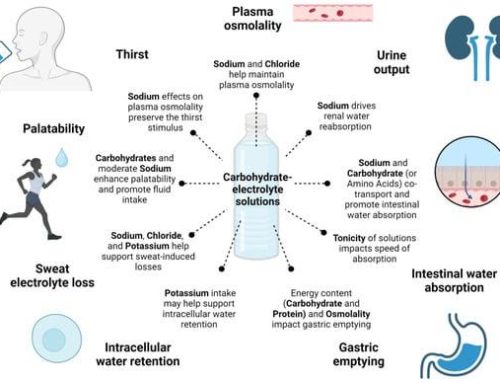Our bodies need oxygen to produce energy that fuels our essential organs. Oxygen is transported from our lungs to the rest of our body through the blood, so ensuring that our blood has enough of this gaseous element is critical.
The amount of oxygen in our blood, or our “blood oxygen levels,” is a simple way to measure whether or not our bodies are getting the oxygen we need to survive. For people with low oxygen saturation in the blood, increasing these oxygen levels is of the utmost importance.
Thankfully, there are many ways to increase blood oxygen levels, even if your current stats aren’t as high as you desire.
Up next, we’ll walk you through the basics of what blood oxygen levels are and what you need to do to improve your levels of oxygen saturation.
Contents
How To Increase Blood Oxygen Levels
In general, there’s no cause for concern if your SpO2 levels are between 95%-100% at sea level.
However, many new smartwatches and fitness trackers now can measure SpO2 levels. This has led to a trend where people are focused on increasing their blood oxygen levels.
The school of thought here is that increasing SpO2 performance during exercise means a better VO2 max and better athletic results.
During periods of heavy exercise, it is normal for blood oxygen levels to drop slightly. That said, anything below 88% at sea level isn’t ideal (even while exercising).
Besides treating any underlying issue that might be causing your low SpO2 readings, here are 2 tips to increase blood oxygen levels:
Tip #1: Eat Foods To Increase Oxygen In The Blood
Our blood can transport oxygen because it contains a protein called hemoglobin. Hemoglobin is the part of your blood that picks up oxygen from the lungs and carries it to other cells in your body.
A central component of hemoglobin is iron, so many people looking to increase their blood oxygen levels try to consume more iron-rich foods. This is particularly important for people with anemia, who are already low on iron.
Some good examples of iron-rich foods include:
- Most meat (e.g., beef, ham, turkey, pork, chicken, lamb)
- Most seafood (e.g., oysters, clams, scallops, shrimp, haddock)
- Eggs
- Green, leafy vegetables (e.g., spinach, broccoli, collard greens, chard, kale)
- Whole wheat
- Rye
- Prunes, dates, and figs
- Lentils and beans
Tip #2: Drink More Water
Dehydration is a sure-fire way to limit your athletic performance and make you feel sluggish. Since 55% of our blood is plasma and 90% of plasma is water, being dehydrated can also affect your blood oxygen levels.
It’s hard to tell people precisely how much water they should drink each day since our bodies all have different fluid needs. At a minimum, people should consume about 2.7-3.7 liters of water each day.
If you live at higher elevations, in hot/humid climates, or you exercise a lot, you’ll need even more water. Try to drink water at every meal and be sure to hydrate thoroughly before exercise to help maintain your SpO2 levels.
What Is Blood Oxygen Level?
Blood oxygen level is simply a measurement of your blood’s oxygen-carrying capacity. Red blood cells carry oxygen from our lungs to the rest of our cells, so your oxygen levels reflect how well these blood cells are doing their jobs.
Typically, about 95%-100% of these red blood cells are what we call “saturated” or full of oxygen. This percentage is often referred to as your oxygen saturation level, which can be abbreviated as SpO2.
What Is A Normal Blood Oxygen (SpO2) Level?
According to Harvard Medical School, a “normal” blood oxygen or SpO2 level is usually about 95%-100%. In general, the higher the SpO2 reading, the better. This is because high readings indicate that your red blood cells are carrying as much oxygen as they can.
However, there are many reasons why your blood oxygen level might be below normal. A low SpO2 reading could simply be a result of a poor reading. It could also indicate a broken pulse oximeter (the device used to measure SpO2), rather than an illness.
Additionally, our blood oxygen levels generally decrease with elevation, so the “normal” range of 95%-100% is more of a reference for people at sea level.
Why Are Blood Oxygen Levels Important?
Blood oxygen levels are significant because they can indicate how well your lungs and blood are working together to get oxygen to your body.
Of course, as we’ve mentioned, other issues can affect your SpO2 reading besides illness. However, if none of these issues are likely, then there might be another issue at play.
People with chronic conditions, such as COPD, asthma, anemia, congenital heart issues, emphysema, and sleep apnea, often have low blood oxygen levels.
Alternatively, an acute (non-chronic) case of low SpO2, if not related to a mechanical issue or something similar, may indicate a more immediate life threat. This includes conditions like pulmonary edema, pulmonary embolism, pneumothorax, or even pneumonia.
However, it’s important to remember that blood oxygen levels are a tool, not a definitive answer. SpO2 levels need to be used in conjunction with other signs and symptoms to determine if there’s a cause for concern. If you have low SpO2 levels, it’s best to see your physician as soon as possible.
How Do I Measure My Blood Oxygen Level?
Measuring your blood oxygen level is quite simple. To do so, you’ll need a pulse oximeter, which is a small device that clips onto the end of your finger. If you’ve ever been to the hospital, you’ve probably used one of these without knowing it.
With the advent of COVID-19, people rushed to buy pulse oximeters for their home as there is some evidence that suggests low SpO2 levels might be an early warning sign of the disease.
However, there’s considerable debate among medical experts as to whether or not people need to have pulse oximeters at home (unless they have a lung condition).
That being said, there’s no harm in having a pulse oximeter, and using one to measure your blood oxygen level is pretty straightforward. You simply need to turn the device on, clip it onto your finger, and wait for the SpO2 reading to flash across the screen.
Should you notice that your SpO2 is significantly below 95%, this isn’t necessarily an immediate cause for concern. But, if you’re not at a high elevation, nor do you have a chronic condition that could affect your oxygen levels, then it’s worth seeing a doctor.








Leave A Comment